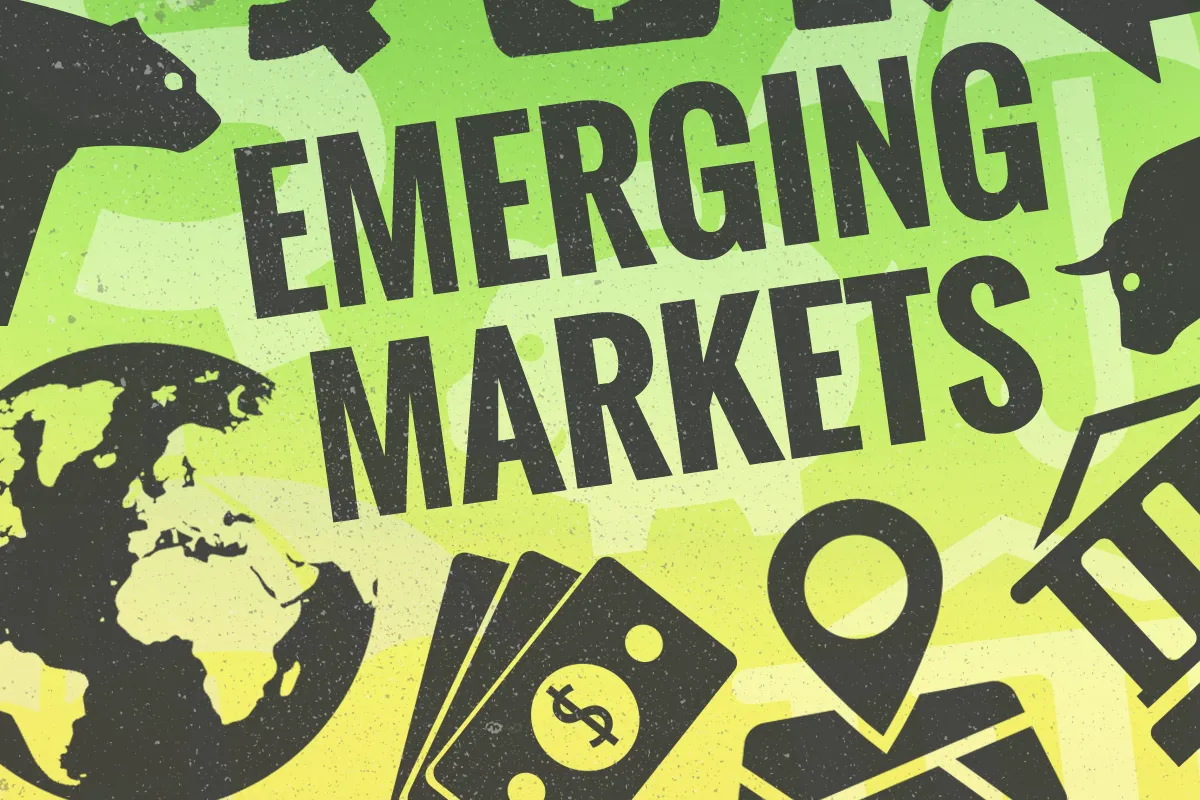Expectations for a prosperous year for damaged emerging-market assets have been dashed by a turbulent finish to the easy-money era.
The much-hyped EM investment story for 2023 is changing into one of resilience and optimism for respectable returns after a choppy first quarter, provided fundamentals instead of contagion risk drive flows.
An early-year rise, supported by expectations for a less aggressive Federal Reserve and China growth, soon became shaky as investor confidence was shaken by the global financial crisis. Due to these concerns, emerging market equities pared an early gain and ended the quarter up just 3.5%, or nearly half as much as their counterparts in developed markets. Less than other global fixed-income groups, EM dollar debt only increased by 1.7%.
Even after a disastrous 2022, even small increases show some resiliency "in a world where the developed countries are significantly attempting to limit demand," according to Steven Quattry, a money manager at Morgan Stanley Investment Management.
"You may have been startled if I told you over a year ago that the Fed rate would be at 5%, the currency has gained, and EM is still holding on," said New York-based Quattry. His company celebrated the beginning of a decade of EM outperformance in January by pulling money out of US stocks to invest in riskier assets at competitive rates.
EM dollar debt caused investors to lose 15% last year, while stock prices fell by 22%, which was the worst performance since 2008. Tremors in the world financial system stopped the 2023 early rebound.
Despite this setback and likely future turmoil, as the globe gets used to higher borrowing rates, the fundamentals of emerging markets (EM) remain attractive: a strong growth forecast, an anticipated drop in inflation, and China's lifting of Covid restrictions.
Chinese PMIs are showing signs of traction in the economic recovery.
We do feel EM fundamentals appear pretty solid compared to developed markets, but whether that implies EM will outperform developed-market fixed-income markets is difficult to determine, according to Liam Spillane, head of emerging-market debt at Aviva Investors Global Services Ltd.
Chinese funds accounted for roughly a quarter of the net $40.9 billion that poured into global EM equities funds through March 29, the largest in a year, according to EPFR Global statistics. In contrast, bond funds saw net outflows of $1.6 billion during the period, down from an outflow of $13 billion in the last three months of 2022.
Quality Counts
Global markets' flight to quality hurt high-yield EM debt. JPMorgan Chase & Co. statistics show that the additional yield investors require to hold speculative-grade sovereign bonds over US Treasuries has increased by 19 basis points for investment-grade bonds, but by 62 basis points for sovereign bonds.
As a result, the difference between the two has increased to 732 basis points, or more than twice the average from the previous 20 years, or a spread of spreads. This raises concerns about whether trash bonds are comparatively undervalued and due for a run of strong performance.
Wall Street has split. Although Jean-Charles Sambor, head of EM fixed income at BNP Paribas Asset Management, is placing his bets on high-yield and frontier names, Aviva's Spillane predicted that higher-quality debt in the investment-grade universe will help boost total returns.
"High yield vs investment grade has historically seen such a large dislocation, but it always returns to normal. This time should not be any different, said Sambor. "It's difficult to have additional outflows when people are still very underweight and valuations are much more alluring in EM," says the author. "You already had enormous outflows last year."
AllianceBernstein Ltd., on the other hand, issues a warning that the strain developing in frontier markets will persist and suggests lowering holdings in riskier EM categories.
Adriaan du Toit, the company's director of EM economic research based in London, said it was tough to be upbeat before the global economic cycle's bottom. "Nations without the institutional structure to balance some of these social risks might cause additional credit deterioration," the author warns.
A New Modesty
Local government debt, which has recovered roughly 3% this year, and currencies have also demonstrated resilience. In the last three months, the forint of Hungary and the peso of Mexico both rose by 7% or more.
According to a report released last week by Gramercy Funds Management LLC, led by Mohamed el-Erian, if financial turbulence inhibits interest rate rise desire in the US, it might weaken the dollar and help EM currencies.
The study now concedes that "no one ever believed removing the punch bowl would come without hurdles," after Gramercy highlighted in October that skipping emerging markets would be a "non-recoverable blunder."
As the globe exits an ultra-low rate environment, there will be more "pain," but there are reasons to be cautiously hopeful, according to Claudia Calich, head of emerging-market debt at M&G Investments.
While trying to predict what will happen next, the market is quite sensitive, she stated. We continue to closely monitor the statistics, both in terms of economic activity and inflation.

Subscribe to our newsletter!
As a leading independent research provider, TradeAlgo keeps you connected from anywhere.








